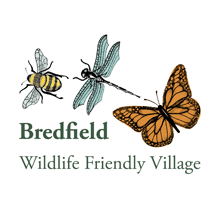In the depth of winter, the sights and sounds of nature seem in short supply. However, there are winter birds to be seen out and about in the gardens, trees and fields of Bredfield. Though a few are loners, most birds become very sociable at this time of year – gathering in flocks, some as little as six in number and some as large as fifty or more.
Fieldfare and Redwing are winter thrushes that arrive around November and leave around March. They can be found in flocks feeding in the fields; sometimes with both species together. If there are berries left in the hedgerows, you’ll find them there too. Listen out for their very distinctive calls as they fly overhead.
Goldfinch, Blue Tit and Great Tit are the birds most likely to been seen on garden feeders; gathering in groups of between four to fifteen. Tiny Blue Tits will all be snuggled-up together at night to keep warm, perhaps in a nest box that has been left up through the winter. Even Blackbirds, which don’t usually tolerate others on their patch, can be found in numbers. If you see a male Blackbird with a black bill, rather than a yellow one, it may well be a winter arrival from northern Europe, joining in with the local birds.
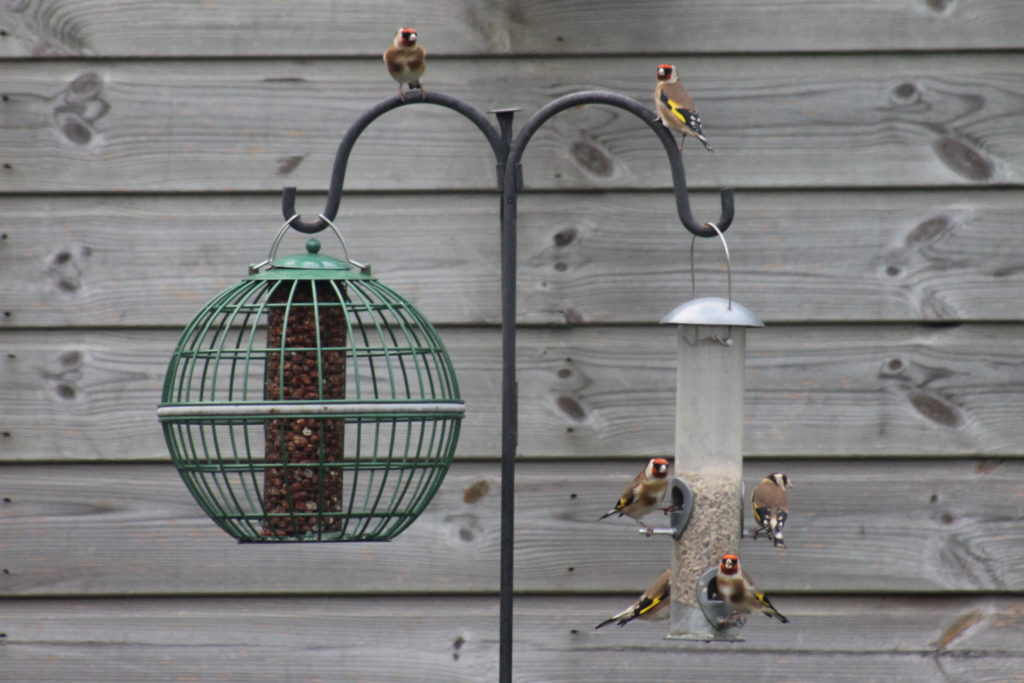
Six Goldfinch on feeder 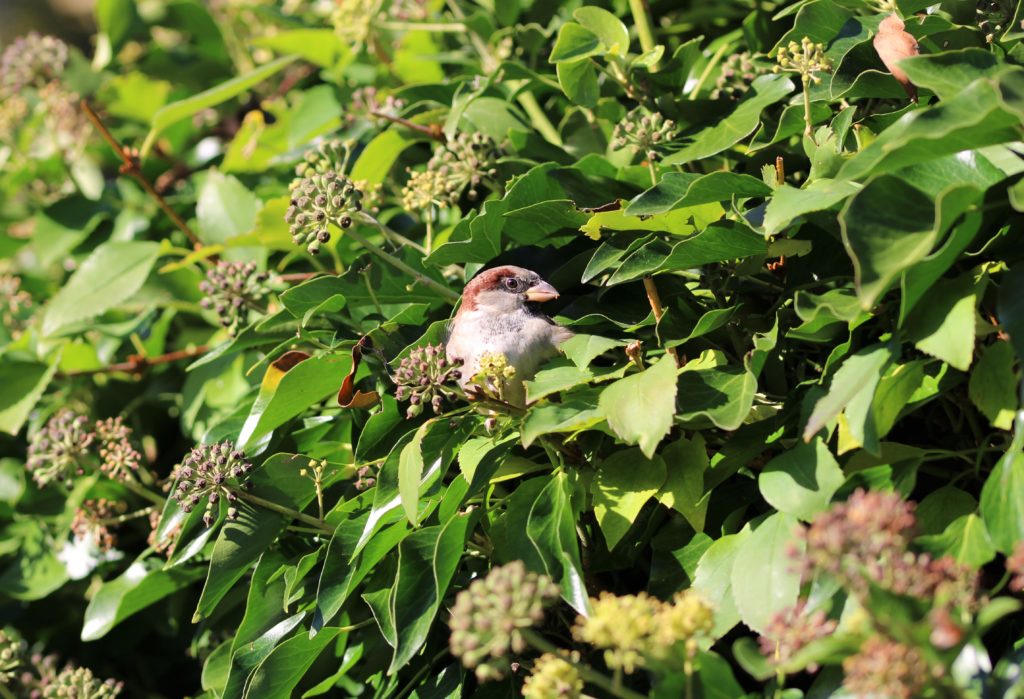
House Sparrow in hedge
House Sparrows are communal the year round and they nest communally. Thick hedges are a boon to flocks of House Sparrows. They shelter there together and venture out as a group on feeding sallies. Maintenance of hedgerows and provision of communal nest boxes are both things that can be done to stem the decline of Britain’s most familiar bird.
On the fields, flocks of Rook, Jackdaw, Carrion Crow, Woodpigeon and Lapwing gather to feed. If a field has been ploughed, you’ll find large numbers of gulls gathered there; most will be Black-headed Gull. If you’re lucky on your walks, you might find small flocks of Yellowhammer, Meadow Pipit or Skylark in the fields.

Lapwings
Birds gather in flocks over the winter period because there is safety in numbers and the location of food is easier with more eyes looking and beaks probing. In addition, this is not the time of year when birds are protecting territory and competing for mates. So, there’s no good reason why the birds shouldn’t gather together.
However, the Robin is one notable exception to this rule and they remain fairly anti-social throughout the year. Birds of feather don’t always flock together! Probably as a result of their anti-social nature, the Robin is the one bird that continues to sing through the winter. His song sounds a little weaker than in the spring, but it’s still delightful. Listen for it when you venture outside.
One of the most spectacular gathering of birds is when thousands of Starlings gather together and swarm around in amazing shapes, just before going to roost. This is called a ‘murmuration’. It is unlikely that you’ll witness this event in Bredfield, but it sometimes occurs nearby at Minsmere (where this photograph was taken).
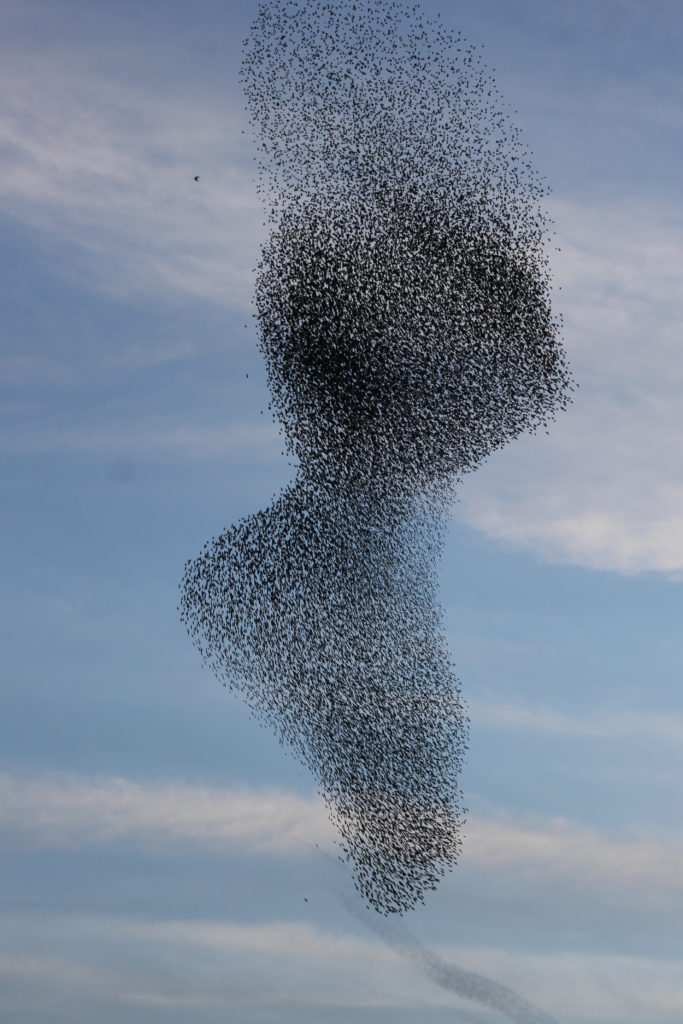
‘Flock in a Sock!’ – Starling murmuration at Minsmere (Stewart Belfield)
Often, flocks contain a mixture of bird species. Mixed flocks of small birds can often be found roaming through woodland in the winter. Birders call these ‘bird waves’. The most numerous species in these flocks will usually be Blue Tit, Great Tit and Long-tailed Tit; but other species such as Treecreeper, Goldcrest or a woodpecker may tag along. Again, numbers bring some safety from predation and improved location of food. Nature isn’t always ‘red in tooth and claw’, it also displays mutual aid and cooperation.
Birds have acquired collective names for when they gather in flocks. Some names are positive, but some are quite negative and dastardly. A group of Skylarks is affectionately referred to as a ‘celebration’ or an ‘exultation’. A group of Goldfinches is called a ‘charm’. A gathering of Magpies is humorously referred to as a ‘Parliament’. Other members of the Crow family have acquired particularly pejorative names: an ‘unkindness of Ravens’ and a ‘murder of Crows’. These are, no doubt, derived from medieval folklore and thankfully have now fallen out of use. Some collective names are not familiar and their origin obscure. A flock of flying geese is called a ‘skein’. This word is derived from the Old French word ‘escaigne’, which refers to a length of yarn that, when folded back on itself, resembles the ‘V’ shape which geese adopt when flying high over long distances.
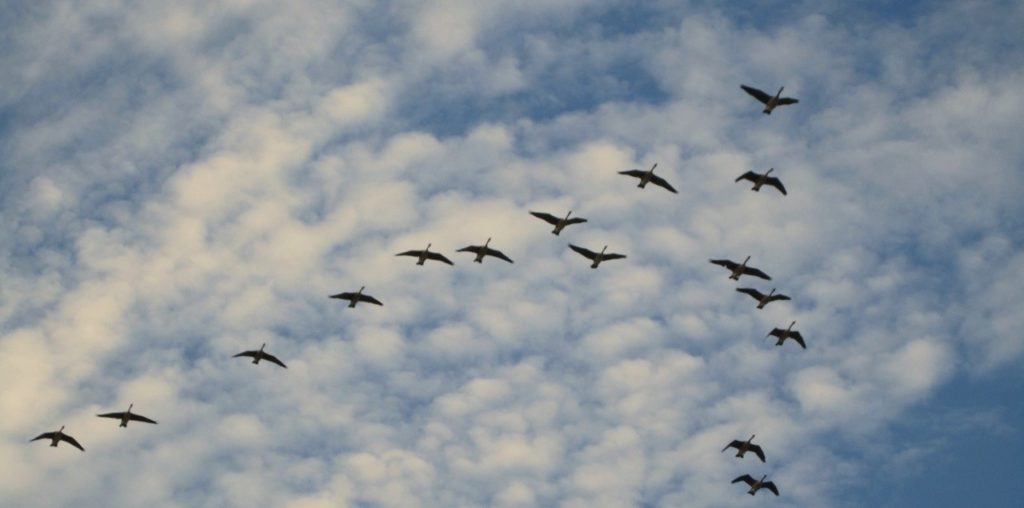
A skein of Geese
So, never mind the mud and cold. Get out and enjoy those flocks!
This article previously appeared in a shorter and unillustrated version in the Bredfield Lantern
